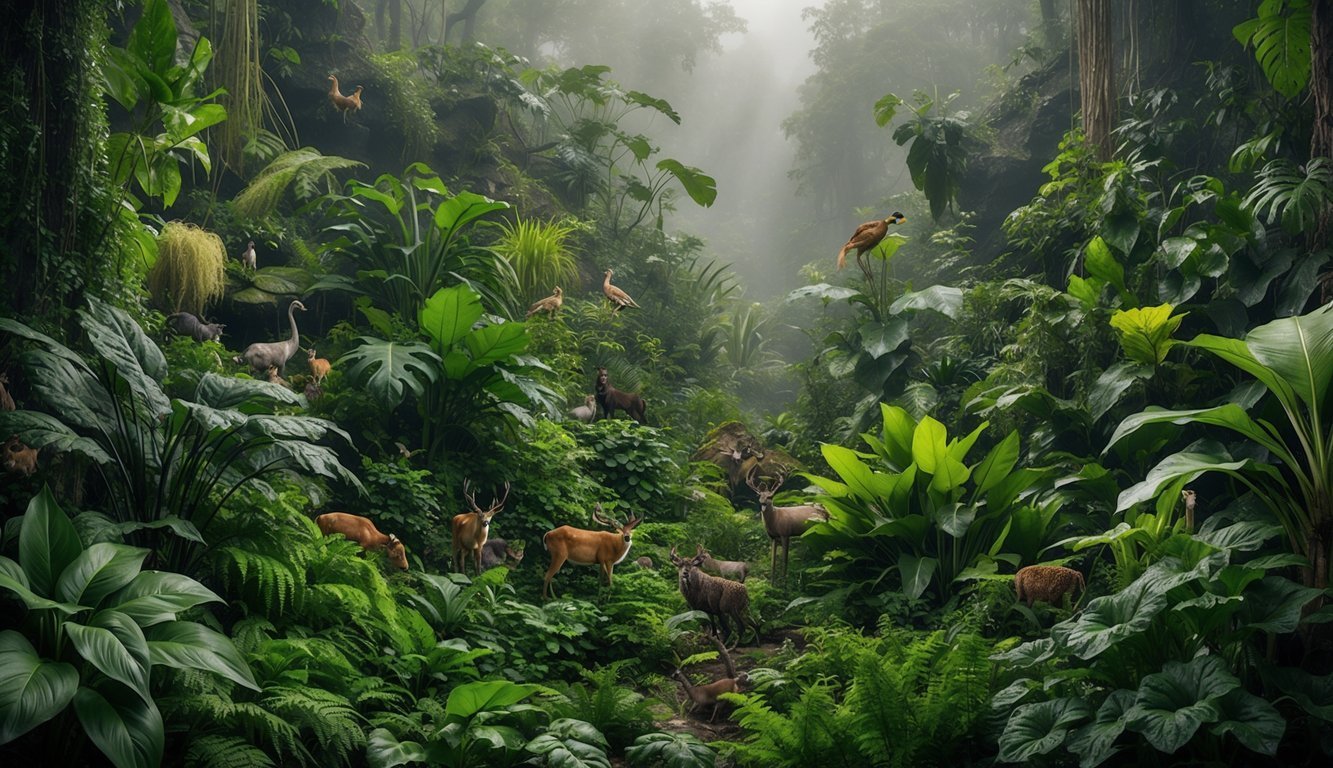
Traditionally, evolution has been viewed as a linear journey, moving from simpler organisms to more complex forms. However, recent research brings attention to a captivating trend where certain species of ferns appear to undergo evolutionary regression.
Reevaluating Evolution
To illustrate this idea, think of a family lineage represented through photographs of different generations. Each cohort shows similarities but also unique characteristics. This concept reflects the fundamental nature of evolution, characterized by descent with modification. Over numerous generations, these modifications can result in significant diversity among the living organisms on Earth.
Historically, this notion has been misinterpreted as a one-way trip toward progressively advanced life forms. A notable example of this is Rudolph Zallinger’s 1965 illustration, “The Road to Homo Sapiens,” which depicts humans as the ultimate achievement of evolution emerging from primitive ape-like ancestors in a linear, stepwise manner.
Extending this concept beyond human evolution, early paleontological theories supported “orthogenesis,” which suggests that species continuously evolve toward more complex states. However, evolution does not have a predetermined endpoint. There are no ultimate objectives or fixed conclusions; instead, organisms change through natural selection or genetic drift, influenced by specific geological contexts or environmental pressures.
Ferns and Evolutionary Regression
In a collaborative study with Makaleh Smith during her undergraduate internship at Harvard University, the focus was on examining whether the model of reproductive evolution in plants is indeed unidirectional. Surprisingly, findings showed that many ferns, among the oldest plant groups, have the ability to evolve their reproductive strategies in a reciprocal manner, occasionally regressing to less advanced forms.
Changes in environmental conditions can drive unexpected evolutionary pathways. For instance, the long-standing relationship between dinosaurs and mammals illustrates this. For over 150 million years, mammals remained small and largely nocturnal due to the predatory presence of dinosaurs. However, the Chicxulub asteroid impact around 66 million years ago shifted this dynamic dramatically. With most non-avian dinosaurs wiped out, mammals found themselves free from predation, leading to significant diversification and the rise of larger species, including humans.
In 1893, Belgian paleontologist Louis Dollo proposed that once an organism achieves a certain level of complexity, it cannot revert to a prior evolutionary state, despite similar environmental conditions. This concept, known as Dollo’s law, suggests that specialization generally moves in a one-directional manner, making backward evolution appear improbable. Although Dollo’s law has been contested and its prominence in contemporary biology has waned, echoes of this idea remain in various discussions about biological processes.
Understanding Reproductive Strategies
Museums often present the evolution of animals as a straightforward progression toward greater complexity, a notion also reflected in educational resources addressing plant reproductive evolution. The earliest vascular plants developed rudimentary stem-like structures called telomes, which functioned in both photosynthesis and reproduction through spore release.
Throughout evolutionary history, plants have increasingly advanced specialized structures that distinguish reproductive functions from photosynthetic ones. Observing plant evolution from spore-bearing lycophytes to ferns and subsequently flowering plants suggests a trend towards enhanced reproductive specialization. Flowers are often depicted as the ultimate representation of botanical evolution.
Ferns display a range of reproductive strategies. Most employ a monomorphic strategy, where spore development and photosynthesis occur on a single type of leaf, while others exhibit dimorphism, producing different leaf types for these two functions.
The research indicates that not all forms of reproductive specialization in plants are permanent; rather, this may depend on the extent of achieved specialization over time. Understanding which species or traits are considered “locked in” may be crucial for anticipating how organisms adapt to swift environmental changes and the effects of human activities on ecosystems.
Ultimately, this study underscores a fundamental principle of evolutionary biology: evolution does not have an inherent direction, nor does it reach a final destination. Evolutionary pathways more closely resemble complex networks, where branches can diverge, converge, and at times even reverse.
Study Details:
- Authors: Jacob S. Suissa, Makaleh Smith
- Journal: Evolution
- DOI: 10.1093/evolut/qpae159

